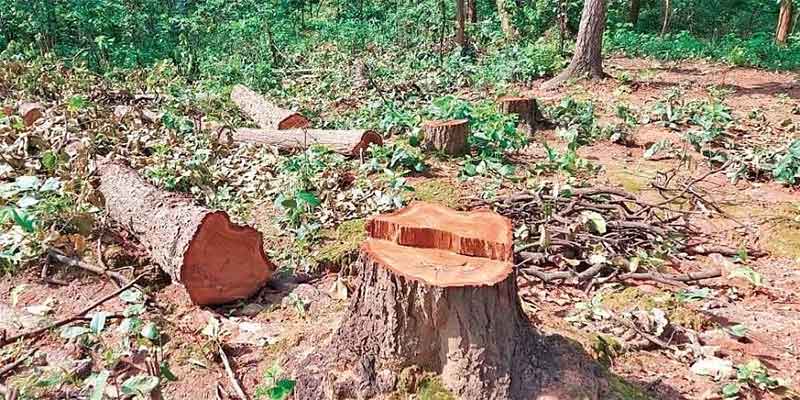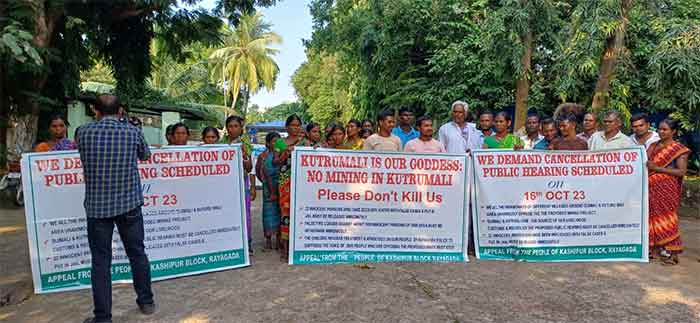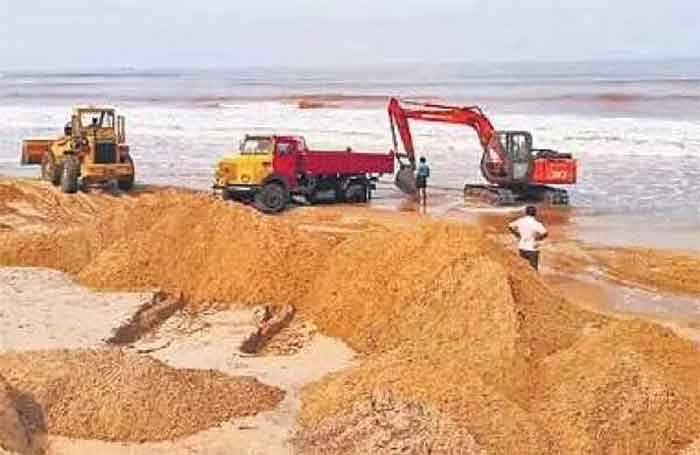A composite photo study in detail and contrasts; a forest turns red due to iron ore mining, and a forest reclaims an abandoned colony a block away, while an indigenous people have been congregating in a village Ghotul for over the past five months to protect their culture, their rivers, their lands, their forests.

An Allapalli Forest Development Corporation of Maharashtra colony was abandoned forty years or more ago. A forest grows where a sawmill used to be.
In the same block, small rivulets are covered in red iron oxide, a consequence of iron ore mining in nearby Surjagad and in the stockades built by the companies, Lloyd’s Metals and Energy Private Limited and Thriveni Earthmovers.
A young boy was asked a question by a traveller. ‘You have seen both these places. Which is the beginning of life and which is the end of the world?’
The young boy, says the first place, the forest taking over the derelict homes of people, is the end of the world. And the mines are the beginning of civilization.

His uncle, an Old Forester, tells him that he is wrong. ‘The beginning of life, its perseverance is the doomed forest township, where the forests come back to life, and mining is the end of life, for nothing will be able to grow there again.’ And he clarifies that his nephew isn’t completely wrong, but that he shouldn’t believe that human beings are the center of everything.
In the adjacent block, the mining of Surjagad had increased exponentially over the past few years, since it was halted by repeated protests by local villagers and Adivasis, over the past few decades. Surjagad, known as Thakurdeo, the God of Gods of the Madia Gonds, is almost unrecognizable, and the existing dense forests next to it, runs awash with red rivulets. A protest site at Todgatta, a village a few kilometers away aims to build consensus and raise awareness against mining of further expansion projects, and the shutting down of mining at Surjagad.

On the wayside of the road from Etapalli to Hedri, convoys of trucks take laterite and ore through day and night, and the red soil covers the forest and the fields. The mining officials have planted trees ‘to offset’ the damage they have done to ancient forests. Most of them are dead, and covered in red soil. Security guards stand at the entrance of every village in the vicinity of the mine, police camps encounter the main roads; no independent observers are allowed into the mining areas.

A Gumiya in the village of Hedri, next to the mine, is covered in red dust. It is a grave of the Madias, where objects most used, and most identified with the departed, are placed onto the grave. There is a small doll, a smartphone, a chair, a bucket, her sandals, her bag and her mirror. Everything is covered in red dust.
On the 20th of Novemeber, 2023, the militarized police had cracked down on the protest at Todgatta and arrested 21 people. They did not allow any one to use their phone cameras and specifically targetted the leaders of the movement.
Photo essay by an Anonymous social activist

















































